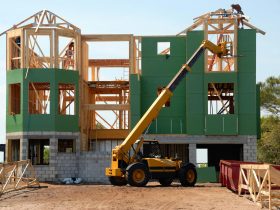Real estate investing has four key pillars: planning, vision, cash flow, and depreciation. Using these four pillars can help you become financially independent. Investing in real estate requires specific knowledge and experience, but the long-term benefits can compound over time and accelerate the path to financial freedom.
Planning
When you decide to invest in real estate, it is critical to have a plan. One of the most important things to plan is cash flow, which is a function of your expenses and income. The expenses you have to consider include the mortgage, utilities, taxes, and insurance, as well as budgeting for vacancy and capital expenses. Once you have established your cash flow, you can begin to make your investments.
When you’re first starting, it can be daunting to imagine investing. While researching potential investments is a good idea, you should get ahead with a plan. While you’ll want to find a great property, you’ll also want to plan for all possible contingencies. Investing in a property that has fallen through while you’re waiting for it to sell is not a good idea.
Cash flow
Having cash flow is crucial to your success as a real estate investor. Without it, you may be sticky, spending more money than you make. If your property is not generating cash, it may be time to borrow money to cover expenses. Luckily, there are a few ways you can increase your cash flow without taking on too much additional risk. One of the easiest ways is to increase your rent. However, raising the rent too much can lead to tenants leaving your property.
Cash flow is the amount of money coming in and out of your property each month. It’s a vital metric that helps you assess the value of a property. This is because it represents the difference between income and expenses. After paying your mortgage and other bills, your cash flow will show you how much you can afford to spend on operating the property. You’ll need to consider things like vacancy rates and future capital expenditures.
You should also monitor mortgage interest rates closely. A falling mortgage rate can result in lower mortgage payments, which can help your cash flow. It’s also essential to run all the numbers, including lender fees and closing costs. Consider all of these expenses in your calculations if you’re buying a rental property like the cash buyers in Pennsylvania. Then, you can evaluate whether you’ll have positive cash flow each month.
Visualization
Visualization is integral to developing an entrepreneurial mindset and cultivating a real estate investing mindset. It involves creating a goal picture and making plans for overcoming adversity. It’s a powerful technique for cultivating the right mindset. Real estate investors can use visualization to develop a picture of success that helps them focus on the process of investing.
Depreciation
Depreciation is an important concept when investing in real estate. It is an expense that reduces taxable income. However, this expense can only be offset by other forms of passive income, such as stock dividends and fixed-income securities. This is especially important when you are starting.
The benefit of depreciation is that it treats rental real estate as tax-free bonds. While cash you earn from rental real estate is taxable, the tax rate is comparatively lower. In addition, you can also take advantage of a 1031 exchange to reinvest the proceeds from selling an asset, which results in the simultaneous deferral of capital gains tax and depreciation recapture.
Depreciation is calculated based on the cost of the property and the recovery period. However, some costs may not be included in the basis, and you should consult a certified tax professional for assistance. For example, you may not be able to deduct the cost of the land itself because it is not considered depreciable in the eyes of the IRS.








Leave a Reply